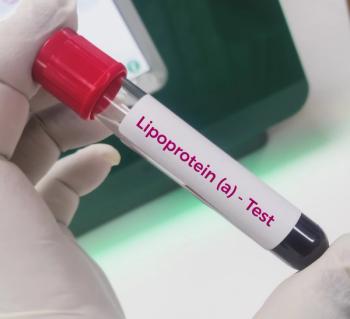
- Managed Healthcare Executive June 2019 Issue
- Volume 29
- Issue 6
Hospital Pharmacist Role Expands in Patient Care
Why hospital pharmacists are playing an increasingly-large role in patient care and why their involvement can boost medication outcomes and reduce errors.
Hospital pharmacists are not unlike pharmacists in other practice settings. Their primary objective is to ensure that patients experience safe medication use.
Beyond that purpose, however, the role of hospital pharmacists (also known as health-system or clinical pharmacists) encompasses a broad range of duties with the ultimate goal of providing quality care during an inpatient stay, ensuring a seamless transition of care, and reducing the number of medication errors.
Hospital pharmacists consult on diagnosis, examine patient charts, conduct patient evaluations to recommend a course of treatment, and choose the appropriate dosing of medications and evaluate their effectiveness.
“In health systems, pharmacists are more involved with direct patient care than ever before,” says Norman Tomaka, CRPh, a clinical consultant pharmacist in Melbourne, Florida. “There’s an incredible opportunity for pharmacists to improve patient outcomes. I see that happening more and more.”
With the continued trend toward value-based payment models, hospital pharmacists are taking an active part in efforts to reduce readmission rates.
“The role of pharmacists in the hospital is shifting from a distribution-centric model to more of a service delivery focus,” says Eric Maroyka, PharmD, BCPS, director of the Center on Pharmacy Practice Advancement section for the
Proactive steps
The suggested pharmacist-to-patient ratio for optimal care is about 1-to-30 (1-to-20 in the intensive care unit), notes Kimberly A. Boothe, PharmD, MHA, system director, pharmacy services for
With fewer patients to treat, hospital pharmacists can examine patients more holistically for both acute and chronic conditions.
Acutely, a patient is admitted with signs and symptoms of emerging sepsis, although the lab work initially seems fine. Hospital pharmacists are knowledgeable about those signs and symptoms. They can identify a drug that may be harmful if not adjusted to compensate for acute changes in kidney function because of emerging sepsis.
“A hospital pharmacist can take steps to communicate with the nursing and physician team about a dose adjustment or preemptively recommend discontinuing a medication,” Maroyka stresses. “They can make proactive changes based on evidence instead of reactive changes later that will unnecessarily extend a patient’s hospital stay.”
Related article:
For patients with chronic conditions, hospital pharmacists can collaborate with physicians to manage disease states such as hypertension and chronic obstructive pulmonary disease, mainly through patient education and counselling, drug safety management, medication review, monitoring and reconciliation, detection and control of specific risk factors, and outcomes.
These examples of interactions show the value of the hospital pharmacist participating in rounds as part of the care team.
“Many times, the body stresses when someone is in the hospital,” says Brook DesRivieres, PharmD, MS, a member-spokeswoman for the
DesRivieres describes the hospital pharmacist as a watchdog. “We’re the safety net,” she points out. “A provider may order a drug therapy, but it may not be administered until the pharmacist does a safety check. That’s the biggest contribution pharmacists make in the inpatient setting.”
Transition of care
Medication management has many gaps that, if not closed, could result in an adverse event for patients. Those gaps become more noticeable-and potentially more life threatening-during a transition of care from the hospital to home, a rehab or skilled nursing facility, or other care setting. Hospital pharmacists coordinate post-discharge care to prevent adverse events.
At discharge, pharmacists ensure there is an accurate and updated medication list communicated with patients and their providers. In certain cases, pharmacists will check to see whether patients have access to the pharmacy and a way to pay for the medications. Care coordination may be done with the servicing outpatient pharmacy.
“The pharmacist can determine whether there is a reason that a medication is no longer indicated and be discontinued,” notes Erika Thomas, MBA, BS Pharm, director of the Inpatient Care Practitioners section for ASHP. “If the patient is elderly and at risk for falls, the risk and benefits of certain medications must be evaluated.”
Transition of care is important for the health of the patient and because of the changeover from fee for service to value-based payments. More than 2,500 hospitals nationwide will receive reduced reimbursement because of high patient readmission rates during fiscal year 2019 (ending September 30), according to the CMS.
“Readmissions will impact the bottom line,” Tomaka maintains. “Reimbursements are lower due to readmissions. Hospital pharmacists can collaborate with community practitioners, including primary care physicians, nursing home agency, and home healthcare, so there is a medication management plan carried out when patients leave the hospital to prevent readmissions.”
Fewer medication errors
Numerous studies show hospital pharmacists substantially contribute to safer medication use by collaborating with other providers, and they improve the quality (reduced medication discrepancies) of admission and discharge reconciliation by exercising oversight.
Further studies document that pharmacists identify a significantly higher number of medications taken per patient, including more over-the-counter and herbal medications, compared with nurses, and they contact patients’ outpatient pharmacies significantly more often than nurses.
Fewer errors are found when a pharmacist, rather than a physician, completes a patient’s medication reconciliation during a hospital stay,
“There has been lots of research that documents the important role of hospital pharmacists,” Boothe stresses.
Related article:
Data at St. Elizabeth Healthcare show a reduction of errors from 2.8 discrepancies per patient to 0.5 discrepancies per patient with a pharmacy-assisted medication reconciliation process with the addition of medication history technicians and a pharmacist reconciliation review.
Hospital care is complex, and there are multiple opportunities for miscommunication-both in the hospital and post discharge. Hospital pharmacists are trained to circumvent miscommunication. By doing so, they help ensure a quality patient experience.
“Hospital pharmacists must move beyond dispensing and into more clinical areas,” says Melanie R. Smith, PharmD, BCACP, DPLA, director of the Ambulatory Care Practitioners section for ASHP. “This increases patient access to care, while also expanding the role of the pharmacist on a healthcare team. All of which helps to improve the patient care experience.”
Ken Krizner is a freelance writer based in Cleveland, Ohio.
Articles in this issue
over 6 years ago
Seven Pharmacy Regulations Health Execs Must Watchover 6 years ago
Eight Ways to Help Patients Navigate Healthcare Costsover 6 years ago
Cut Through the Cloud Vendor Clutterover 6 years ago
Seven Pharmacy Questions to Consider for 2020 and Beyondover 6 years ago
Featured Exec Joan Budden: President and CEO at Priority Healthover 6 years ago
What You Need to Know About the Vaccine Pipelineover 6 years ago
Managed Care Pharmacy Survey 2019Newsletter
Get the latest industry news, event updates, and more from Managed healthcare Executive.






















































